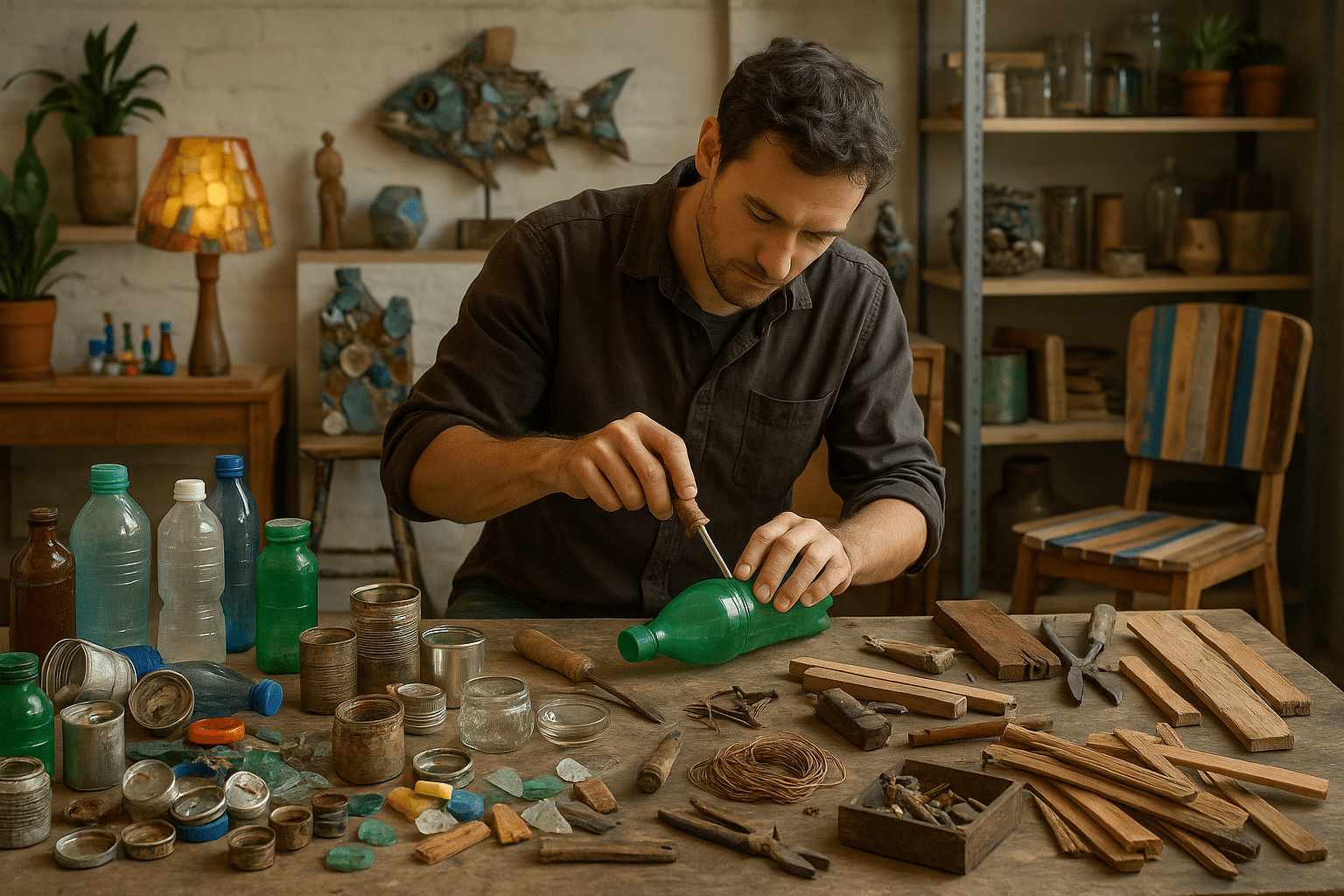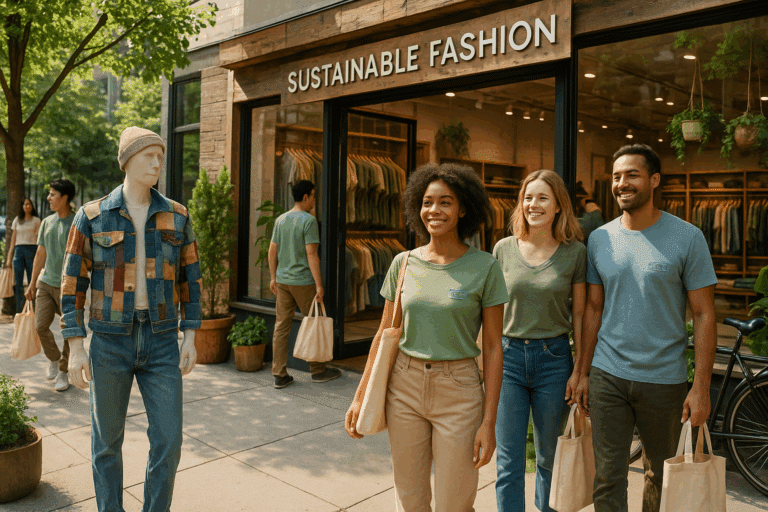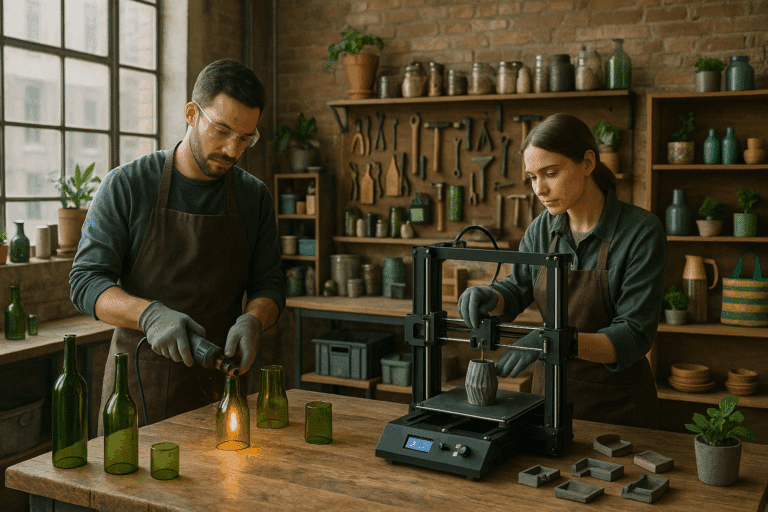Grab your imagination and let’s venture into the realm of Waste Not Wonders, where trash becomes treasure and sustainability is the golden rule. 🌍💫
Through this voyage, we are going to unravel the potential of waste materials that, with a little creativity and innovation, can be transformed into valuable assets. Prepare to be amazed as we reveal how refuse can take on new lives and contribute to a sustainable future. 🔄♻️
Waste Not Wonders is not just about upcycling, it is about completely redefining the way we perceive and handle waste. It’s about viewing waste not as an endpoint, but as a stepping stone towards something even better. It’s about recognizing that every discarded item carries within it the seed of a new possibility, waiting to be brought to life. 🌱🚀
From biodegradable materials turned into environmentally friendly products, to tech waste transformed into innovative gadgets, Waste Not Wonders exemplifies the exciting and limitless world of waste transformation. By showcasing real-life examples, we aim to inspire a paradigm shift that encourages more responsible and sustainable behaviors. 🌳📲
But why does this matter? Well, it’s no secret that our planet is under significant environmental strain, with waste production being a major contributor. With the global waste expected to increase by 70% by 2050, according to the World Bank, there’s a pressing need for innovative solutions to tackle this challenge. Here’s where Waste Not Wonders comes in, pushing the boundaries of what’s possible and creating a sustainable blueprint for the future. 💡🌐
As we delve deeper into this topic, we will explore different categories of waste and how they can be transformed. From organic waste, electronic waste, to plastic waste, and more. We will also uncover the technologies and innovative processes enabling this transformation, from advanced recycling techniques to innovative waste-to-energy solutions. 🔬💻
Further along, we will highlight the role of businesses and governments in fostering a circular economy – an economic system aimed at eliminating waste and promoting the continual use of resources. We will provide insights into policies, regulations, and corporate initiatives that are paving the way for a waste-free world. 🏭🏦
Finally, we will discuss how each one of us can contribute to this cause. We will provide practical tips on how to reduce waste, recycle effectively, and embrace upcycling in our daily lives. We will show you how your actions can make a real difference, contributing to a more sustainable and prosperous world for future generations. 🏡🙌
So are you ready to uncover the magic of Waste Not Wonders? Let’s dive in and transform our future, one piece of trash at a time. After all, every bit of waste saved is a step towards a sustainable future. So let’s get started and make every bit count. 🌈🌟
Introduction: A New Era of Waste Transformation
As the global population continues to grow, so does the accumulation of waste. In an age where we are increasingly aware of our impact on the planet, there is a pressing need for innovative solutions to deal with our waste problem. Enter the world of Waste Not Wonders. Transforming trash into treasure, this forward-thinking approach sees value in what others would discard, turning waste into resourceful commodities for a sustainable future. Let’s delve deeper into this exciting realm and discover the magic of waste transformation.
Note: Check out this inspiring video on YouTube, “The Future of Waste: Transforming Trash into Treasure” by National Geographic. This video offers an eye-opening overview of innovative waste recycling and reusing methods.
Before we dive into the intricacies of transforming trash into treasures, let’s first understand the severity of our current waste situation and why Waste Not Wonders could be a game-changing solution.
The Alarming State of Global Waste
According to a report by The World Bank, the world generates 2.01 billion tonnes of municipal solid waste annually, with at least 33% of that not managed in an environmentally safe manner. With increasing urbanization and population growth, global waste is expected to grow by 70% by 2050. This staggering statistic underlines the urgency of implementing sustainable waste management practices.
The following table illustrates the top 5 countries generating the highest quantity of waste in millions of metric tonnes (MMT).
| Country | Waste Generation (MMT) |
|---|---|
| United States | 258.5 |
| China | 208.4 |
| India | 94.7 |
| Japan | 52.36 |
| Brazil | 48.36 |
On a more positive note, the potential for waste recycling and transformation is tremendous. If harnessed correctly, it could be a key driver for sustainable development. Let’s explore how Waste Not Wonders are making this possible.
Unveiling the Magic of Waste Not Wonders
Waste Not Wonders is an ingenious approach that taps into the idea of a circular economy, transforming waste materials into valuable products. This goes beyond traditional recycling to incorporate principles of redesign, repair, reuse, and remanufacturing, significantly reducing the need for new raw materials and minimizing waste.
From plastic bottles transformed into eco-friendly building materials to old tires converted into playground surfaces, the possibilities are boundless. This not only presents an innovative solution to waste management but also creates economic opportunities. Here are some exciting examples of Waste Not Wonders:
- Recycled Glass Products: Companies like Vetropack and Glass Recycled Surfaces are turning waste glass into beautiful countertops, decorative tiles, and even jewelry.
- Upcycled Fashion: Brands like Patagonia and Eileen Fisher are making waves in the fashion industry with clothing lines made from recycled materials.
- Repurposed Electronic Waste: Organizations like Homeboy Electronics Recycling are salvaging valuable metals from old electronics and employing disenfranchised individuals in the process.
For a more visual representation, check out the “Incredible Recycling Innovations” video by Seeker on YouTube, which showcases fascinating examples of waste transformation.
Transforming Trash into Treasures: The Technologies Behind
Behind these miraculous transformations of trash into treasures are groundbreaking technologies that are making waste upcycling and recycling more efficient and effective. Let’s explore some of these:
1. Mechanical Recycling
This is the most common method of recycling, involving physical processes like sorting, shredding, and melting to convert waste into new products. However, mechanical recycling often produces lower quality materials due to degradation during the process.
2. Chemical Recycling
Chemical recycling uses chemical processes to convert waste materials, particularly plastics, back into their original raw materials. This technology can produce higher quality products, but the processes are often more complex and energy-intensive.
3. Biological Recycling
Biological recycling uses natural processes such as composting and digestion to decompose organic waste materials, producing valuable products such as compost and biogas. This method is environmentally friendly but can be slow and is limited to certain types of waste.
These technologies are continually evolving, driven by the increasing demand for sustainable waste management solutions. Take a look at the YouTube video, “The Future of Recycling Technology,” by the Wall Street Journal for a deeper understanding of these technologies.
Driving Towards a Sustainable Future
As we move forward, the concept of Waste Not Wonders is expected to gain even more traction. By embracing waste as a valuable resource rather than a problem, we can drive towards a more sustainable future, promoting economic growth, and protecting our environment.
Change, however, begins with us. By adopting more sustainable practices in our daily lives, like reducing our waste, reusing items, and recycling wherever possible, we can all contribute to this global movement. Remember, every little effort counts!
Stay informed about the latest in waste transformation by following leading organizations in this field, such as The Ellen MacArthur Foundation and the Waste & Resources Action Programme (WRAP). Be a part of the Waste Not Wonders revolution and help pave the way to a sustainable future.

Conclusion
In conclusion, this comprehensive article has provided an in-depth examination of the theme at hand, condensing a wealth of technical information into a digestible and accessible format. We’ve traversed the key areas of our topic, allowing both seasoned professionals and intrigued newcomers to gain a more profound understanding of the subject matter.
We began by delineating the fundamental concepts, highlighting the intricate details which are often overlooked. Through this process, we’ve demonstrated the impressive breadth and depth of the topic, providing a framework upon which you, the reader, can build further knowledge.
In the subsequent sections, we delved into the practical implications, discussing the real-world applications and their effects on our day-to-day lives. These practical examples serve as a testament to the significance of the subject, and how it influences various facets of the technology and engineering world.
We also explored potential future developments, an essential aspect to keep abreast of in our rapidly evolving digital age. The future-oriented perspective offered should help in forming a clear picture of where we stand today and the direction we are heading.
The importance of this topic cannot be overstated. Whether we’re discussing TI, software engineering, or another complex field, the ability to understand and apply this knowledge is integral to progress and innovation. Your engagement and understanding of these topics will help to drive forward the collective knowledge in these areas.
Now, it’s your turn to participate in this ongoing conversation. Feel free to leave a comment, share this article with your network, or apply the knowledge gained in your professional practice. Remember, each one of us, through our understanding and application of these principles, contributes to the progress in our field.
We hope this comprehensive overview has been enlightening, and that it encourages you to explore the topic further. For those interested in deepening their understanding, we recommend visiting reputable online resources such as MIT Technology Review and Nature Computer Science where you can find additional material on the subject.
So, keep exploring 🧐, keep learning 🎓, and most importantly, keep sharing your knowledge 🗣️. Remember, the journey of learning is endless, and the more we share, the more we grow. We look forward to seeing your contributions in the comments section and beyond.
To ensure you stay updated with the latest insights, consider subscribing to our newsletter or following us on our social media platforms. Thank you for joining us on this knowledge journey. Till our next deep dive, happy reading and exploring!
Written by: Rodrigo Almeida, Software Engineer & Technical Writer.



